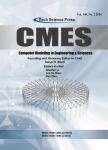Automated Classification of Snow-Covered Solar Panel Surfaces Based on Deep Learning Approaches
作者机构:Department of Electrical and Electronics EngineeringKarabuk UniversityKarabuk78100Turkey Department of Computer EngineeringIstinye UniversityIstanbul34303Turkey College of Engineering and TechnologyAmerican University of the Middle EastEgaila54200Kuwait
出 版 物:《Computer Modeling in Engineering & Sciences》 (工程与科学中的计算机建模(英文))
年 卷 期:2023年第136卷第9期
页 面:2291-2319页
核心收录:
学科分类:08[工学] 080502[工学-材料学] 0805[工学-材料科学与工程(可授工学、理学学位)]
主 题:Deep learning CNN models image classification solar panels solar panel defect detection
摘 要:Recently,the demand for renewable energy has increased due to its environmental and economic *** panels are the mainstay for dealing with solar energy and converting it into another form of usable *** panels work under suitable climatic conditions that allow the light photons to access the solar cells,as any blocking of sunlight on these cells causes a halt in the panels work and restricts the carry of these ***,the panels are unable to work under these conditions.A layer of snow forms on the solar panels due to snowfall in areas with low ***,it causes an insulating layer on solar panels and the inability to produce electrical *** detection of snow-covered solar panels is crucial,as it allows us the opportunity to remove snow using some heating techniques more efficiently and restore the photovoltaics system to proper *** paper presents five deep learning models,■-16,■-19,ESNET-18,ESNET-50,and ESNET-101,which are used for the recognition and classification of solar panel *** this paper,two different cases were applied;the first case is performed on the original dataset without trying any kind of preprocessing,and the second case is extreme climate conditions and simulated by generating motion ***,the dataset was replicated using the upsampling technique in order to handle the unbalancing *** conducted dataset is divided into three different categories,namely;all_snow,no_snow,and partial *** fivemodels are trained,validated,and tested on this dataset under the same conditions 60%training,20%validation,and testing 20%for both *** accuracy of the models has been compared and verified to distinguish and classify the processed *** accuracy results in the first case showthat the comparedmodels■-16,■-19,ESNET-18,and ESNET-50 give 0.9592,while ESNET-101 gives *** the second case,the models outperformed their counterparts in the first case by evaluating performan



